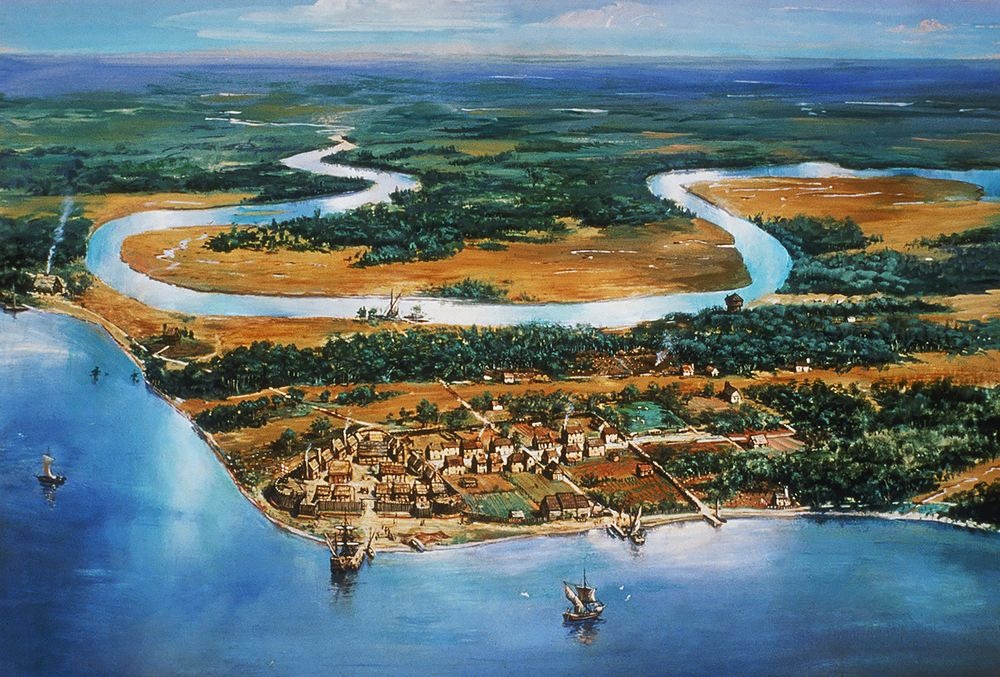
There was a great deal of European contact with the Americas at least as early as the 1400s. Portuguese fishing vessels, Vikings in Newfoundland, the Spanish in the Caribbean, Mexico, and Florida. There were even attempts at colonization on the Atlantic coast. By the early 1600s a group of wealthy English investors, with the approval of King James, pooled funds together to start a colony in North America. They were hoping for gold and silver just like the Spanish found in Central and South America. They also hoped to find a Northwest passage to Asia.
The Virginia Company sent ships with the first settlers and provisions in 1607. They built a fort on a site that they named Jamestown after the King. Even though the Company continued to send ships with more settlers and supplies every year – disease, Indian attacks, and starvation plagued the colony. By 1609 the population of Jamestown declined from 500 to 60 survivors. The colony was nearly abandoned in 1610 until the arrival of reinforcements and supplies that summer.
Two of our ancestors, one on the Fike side and one on the Lowe side were part of those relief missions in the summer of 1610. Our first known English immigrant was Henry Bagwell, a Fike ancestor – and the second was Cecily Reynolds on the Lowe side. Cecily’s daughter Temperance was probably our first ancestor born in the New World.
Cecily and 39 other ancestors on the Lowe side of our family immigrated to colonial Virginia between 1610 and 1660. We are related to these immigrants through my great-great grandmother Nannie Martin Farley. This is a link to Nannie’s family tree where you can trace her lineage. Nannie’s great-grandfather John Farley 1751-1816 served in the Revolutionary War and was later awarded land grants in the western part of Virginia that later became the State of Tennessee. Nannie was born in Tennessee before the Civil War. Her family was disrupted by the conflict and her father moved to Northwest Arkansas while Nannie moved to Eastern Missouri with her mother and siblings. In Missouri Nannie met and married William Lowe, a recent English immigrant, who served in the Union Army during the war.
On the Fike side of the family we know of Henry Bagwell and 21 other early Jamestown immigrants who we are related to through Frances Henry. Frances married Thomas Lanman Fike. This a link to her family tree.
After discussing Henry and Cecily we will look at Lowe family ancestors Abraham Wood, Richard Cocke, and Thomas and Jane Sefton Farley. Then we will introduce two Fike ancestors, Joseph Bridger and Robert Bracewell. Joseph was a wealthy and influential planter. He was buried in the Chancel of St. Luke’s Church. Old St. Luke’s, originally known as the “Old Brick Church” of Newport Parish, is the oldest existing Church of English foundation in this country and the nation’s only surviving original Gothic building. In recent archeology his bones were dug up and taken to the Smithsonian for study. You can visit the church today.
Robert Bagwell 1589-1660
On 2 June 1609, ship Sea Venture set sail from Plymouth, England was the flagship of a seven-ship fleet destined for Jamestown as part of the Third Supply, carrying 500 to 600 people. Our earliest arrival, my 10th great-grandfather Henry Bagwell (1589-1660), sailed on the Sea Venture.
On July 24th, the fleet was caught in a tremendous hurricane. The storm forced the Sea Venture aground on the reef off Bermuda (the stories of this shipwreck inspired the plot of Shakespeare’s “The Tempest”). The crew and settlers reached the shore, where they lived for several months. Eventually they constructed two smaller ships from timbers salvaged from the Sea Venture, and sailed on to the struggling settlement at Jamestown, where they arrived in May of 1610.
Arriving there on the heels of the infamous “starving time” they found stores depleted, and in June, the settlers decided to abandon Jamestown to sail back to England. While they were waiting for the tide to turn at the mouth of the James River, they encountered the first ships of Lord De Le Warr’s relief expedition. Since the expedition brought more settlers and was well supplied everyone returned to Jamestown.
Not a lot was written about Henry Bagwell, but we know that by 1623 he owned land upriver from Jamestown at a plantation known as Shirley Hundred. He died sometime after 1640.
Cecily Reynolds 1600-1676
Our second known Jamestown immigrant ancestor was Cecily Reynolds who arrived in August of 1610. The following excerpt is from a posting on Familytreemaker.com:
“Cecily was born 1600 in England, and died Abt. 1662 in Charles City, Henrico Co. Virginia. She married (1) Thomas Bailey on Abt. 1616 in Henrico Co. Virginia. She married (2) Samuel Jordan on Bef. December 01, 1620 in Henrico Co. Virginia. She married (3) William Farrar on Bet. January 03, 1624/25 – May 02, 1625 in Charles City, Henrico, Co. Virginia, son of John Farrer and Cecily Kelke.
“Cecily” was said to have introduced the art of flirting in Virginia… she was the original southern belle and no doubt beautiful for she won the hearts of some of the colony’s outstanding citizens. The fascinating Cecily earned her reputation as a heartbreaker and a place in history when she became the object of the first breach of promise suit in America. There is much myth and speculation, but few facts truly known about this often-married elusive lady of whom so many today claim descendancy. There has long been a mystery surrounding the little girl who arrived in Jamestown at the tender age of ten and received the distinction of “Ancient Planter.”
Cecily was born in England about 1600. In June 1610, at age ten, Cecily sailed from the port of London aboard the “Swan” arriving at the Jamestown Colony in late August 1610. The “Swan” was one of a fleet of three ships belonging to Sir Thomas Gates, which along with the “Tryall” and the “Noah” carried 250 passengers and a year’s worth of provisions for 400 men. Fortunately for Cecily she arrived well supplied because the previous year 1609 had been known as that dreadful “starving time” when the infant colony was reduced from about 500 souls to “a haggard remnant of 60 all told, men, women and children scarcely able to totter about the ruined village”. The only surviving record of the passengers on the “Swan” are Cecily “Sisley Jordan” and ten other persons named in the Virginia Muster of early 1624/25 taken 14 years after the voyage.
It is not known for certain who Cecily’s parents were, who brought her to Virginia, or who raised her in Virginia. There is strong circumstantial evidence that Cecily, at about age 16, married her first husband and had daughter Temperance Bailey (possibly our first ancestor born in the New World) from this union about 1617, and was widowed before 1620. It is generally accepted as fact that Cecily was the mother of Temperance Bailey based on the two Musters of Jordan’s Journey of February 16, 1623, and January 21, 1624/5, land patents and deeds, and wills in the Cocke family into which Temperance Bailey married. Lineage societies accept the descendants of Temperance Bailey Cocke (ancestor) as proven.
Some researchers have written that Cecily’s first husband was either John or Thomas Bailey, who came to Virginia in 1612, sponsored by William Pierce… he was a young member of the Governor’s Guard stationed at Jamestown. He and Cecily were married in the home of William Pierce in Jamestown. The young couple lived at Bailey’s Point, Bermuda Hundred and Bailey died of malaria shortly after the marriage.”
Cecily’s daughter Temperance Bailey married Thomas Cocke (ancestor) in 1637. My wife Heather is also descended from Cecily, making us distant cousins. Below is a more extensive biography:
It is thought Cecily Farrar died prior to 1676, probably about 1662, but she may have died much earlier. There is no conclusive proof. Perhaps because her son, Col. William Farrar II, wrote his will in 1676 and doesn’t mention his mother in it may be the reason she is presumed deceased before 1676.
These are images of two historical markers on the South side of the James River in Virginia that mention Cecily and Temperance by name. You can search for Virginia historical markers K 206 and PA 252 to find the locations of these signs if you want to visit the sites of our ancestor’s original plantations.


Note Bailey Creek on the South shore of the James River – With Temperance Bailey mentioned specifically. The North part of this map shows the extensive holdings of the Cocke family. North of the lettering CURLES in the middle of the map is Bremo plantation owned by Temperance and Richard Cocke. If you have good eyesight you can see Abraham Wood, William Hatcher, and Joseph Royall – all Lowe family ancestors.
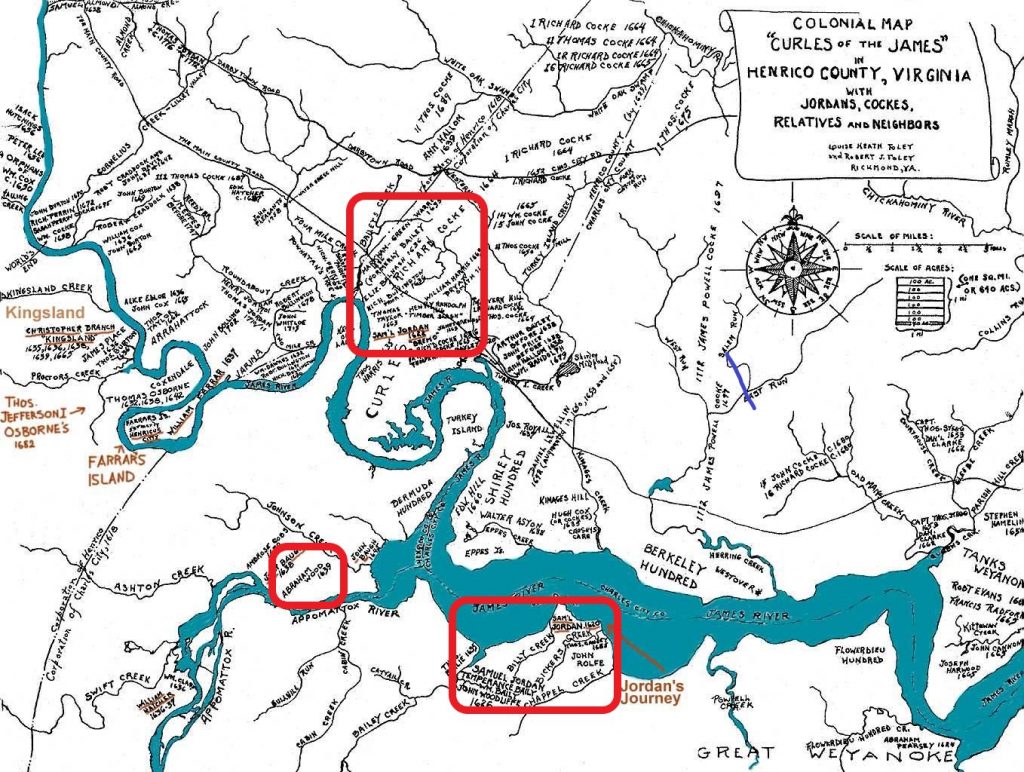
Abraham Wood 1610-1686

Abraham Wood was born in Tottingham, Yorkshire, England in 1610 and died in 1683 in Ft. Henry [Petersburg], Prince George, Virginia. At age 10 arrived in Jamestown in 1620 on the ship Margaret & John and served as an indentured servant to Captain Mathews living on the Mathews’ plantation across the river from Jamestown. In 1638 he was patented 400 acres in Charles City on the Appomattox River.
He became a landowner, politician, Soldier, Trader & Explorer. He was an English fur trader (specifically the beaver and deerskin trades) and explorer of 17th century colonial Virginia. Wood’s base of operations was Fort Henry at the falls of the Appomattox in present-day Petersburg.
Fort Henry was built in 1646 to mark the legal frontier between the white settlers and the Native Americans and was near the Appomattoc Indian tribe with whom Abraham Wood traded. It was the only point in Virginia at which Indians could be authorized to cross eastward into white territory, or whites westward into Indian territory, from 1646 until around 1691. This circumstance gave Wood, who commanded the fort and privately owned the adjoining lands, a considerable advantage over his competitors in the “Indian trade”.
Several exploration parties were dispatched from Fort Henry by Wood during these years, including one undertaken by Wood himself in 1650, which explored the upper reaches of the James River and Roanoke River. The first English expeditions to reach the southern Appalachian Mountains were also sent out by Wood. In 1671, explorers Thomas Batts (Batte) and Robert Fallam reached the New River Valley and the New River. The New River was named Wood’s River after Abraham Wood, although in time it became better known as the New River. Batts and Fallam are generally credited with being the first Europeans to enter within the present-day borders of West Virginia.
In 1673 Wood sent his friend James Needham and his indentured servant Gabriel Arthur on an expedition to find an outlet to the Pacific Ocean. Shortly after their departure Needham and Arthur encountered a group of Tomahitan Indians, who offered to conduct the men to their town across the mountains. After reaching the Tomahitan town Needham returned to Fort Henry to report to Wood. While en route back to the Tomahitan town Needham was killed by a member of the trading party with whom he was traveling. Shortly thereafter, Arthur was almost killed by a mob in the Tomahitan settlement but was saved and then adopted by the town’s headman. Arthur lived with the Tomahitans for almost a year, accompanying them on war and trading expeditions as far south as Spanish Florida and as far north as the Ohio River.
By 1676 Wood had given his place as commander and chief trader to his son-in-law, Peter Jones, for whom Petersburg was eventually named. He retired to patent more plantation land in 1680 west of the fort.

Thomas and Lady Jane Sefton Farley
The Farleys were descended from English and Norman nobility. Through them we are descended from English kings and aristocrats. William De Falaise was a courtier and trusted subject of William the Conqueror. Sir William was of native Norman blood, born within the castle of the Lords De Falaise, who traced their lineage to the ancient Vikings. William de Falaise, at the time of the conquest, was the twenty-seventh lord of this castle. He was rewarded for his loyalty and bravery out of the distribution of the spoils of victory; twenty-nine manors and lordships in the County of Devon. In 1072 he began the building of his castle near the present-day city of Bristol, England.”
Thomas Farley (our immigrant ancestor) was born in 1600 in Liverpool, Merseyside, England. He married Jane, the illegitimate daughter of the Baron of Sefton. The Seftons were also English aristocrats tracing their lineage to the Norman conquerors of England.
As a young man Thomas may have been involved in the legal field and had contact with the Molyneux family that way. Both Thomas and Jane lost all their parents the same year. In 1622 the Virginia colonies were opened to settlement by families. Sir Thomas Farley and Lady Jane left England and arrived in Jamestown in 1623 on the ship “Ann”. Their first child, a daughter, whom they named Ann, was born soon after their arrival or aboard ship.
A muster of the Inhabitants of the Neck-of-Land near James City taken 4 Feb 1624: “Thomas came in the ANN 1623. Jane his wife in the same ship. Ann a child. Servant: Nicholas Shotten aged 40 years in the ANN 1623. Corne, 6 bushells; English meale, 1 hogshead; Pease, 3 bushells; Powder, 2 lb; Lead, 10 lb; Peeces, 2; Armour, 1; Swine, 5 and a pigg; House, 1. page 37 & 38. {Source: Order of First Families of Virginia, 1607-1624/25}”
If you visit Jamestown today, you can drive to the Eastern tip of Jamestown Island and look to the Northeast. The land you see on the bank of the James River is where Archer’s Hope plantation was located. It was later known as Farloe’s Neck (Farley was often spelled Farloe in early records).
Thomas served as a Burgess, representing the plantations between Archer’s Hope and Martin’s Hundred in the 1628 General Assembly of the House of Burgess. He served again during the session of 1630, representing Harrop and the Plantations between Archer’s Hope and Martin’s Hundred. He also served in the Grand Assembly of 1632 as a representative for Archer’s Hope.
The Farleys were wealthy landowners who owned many slaves. Thomas and several other residents of Archer’s Hope were in trouble with the law and the church for being drunk and disorderly late at night. At Court in James City, 21 August 1626, Thomas Farley, gent, confessed to being absent from church on the Sabbath day for three months. He was ordered to pay 100 pounds of tobacco into the public treasury.
He owned his own plantation and rented other adjoining lands to produce large quantities of tobacco for English markets. Thomas maintained a private wharf on the James River, and there is a record of one vessel calling at their plantation for eight tons of tobacco.
He kept in close touch with his family in his homeland and brother, Humphrey, put some of his servants at Thomas’ disposal on the plantation. Thomas sent his eldest children, Ann and George, to school in England.
George Farley was a brother of our ancestor Thomas. He was deeply involved in Bacon’s Rebellion, an uprising against Governor Berkeley of Virginia in 1676. This conflict began because the settlers who lived on the outer limits of the colony were being harassed by Indians and didn’t feel that they were protected by the governor’s militia. The settlers in opposition got somewhat out of hand, assuming authority beyond what was reasonable.
George Farley was one of the twenty-two hanged for their part in Bacon’s Rebellion. Rolls listed him as: Farloe, George – York – Captain – hanged. George was educated in England and was the last owner of the Farley Estate when it was confiscated after the restoration of King Charles II to the throne in 1660.
John B. Farley, Sr. was the son of Thomas & Lady Jane (Sefton) Farley, born 1648, Charles City, Henrico Co., VA; died ca. 1732-33; married Mary Willett (Ancestor) in 1668. John & Mary Farley had nine (9) children: Our ancestor is his son John Farley Jr., born ca. 1670.
John Farley inherited Farloe’s Neck which was eventually sold by 1679 to Edward Gray. John Farley moved to Henrico Co. due to the troubles associated with Bacon’s rebellion.
Richard Cocke 1597-1665

Richard Cocke, our 10th great grandfather, was an original settler to the American colonies while his wife Temperance was among the earliest children actually born in America.
Richard Cocke was born in Pickthorn, Shropshire, England around December 13, 1597 which is when he was baptized. Richard’s father was John Cocke, also of Pickthorn, and his grandparents were William and Elizabeth Cocke, for which he named other children.
Richard arrived in Virginia in 1627 as the purser on a ship called “The Thomas and John”. Eventually, he obtained large grants of land for the transportation of more than 220 colonists to Virginia. He settled at “Bremo,” on the James river, in Henrico county, about 15 miles east of current day Richmond, Virginia.
Before 1632 he married Temperance Baley (Bailey) Browne, the widow of John Browne whom she had married at age 13. Temperance had actually been born in the colonies about 1617.
A review of historical documents suggests Temperance’s father, an “ancient planter,” died very young leaving her with 200 acres of land. In Jan 1625 she is identified as a 7-year-old girl who had been born in the colony who was living at Jordan’s Journey. Temperance’s mother was Cecily Jordan Farrar (our 11th great grandmother) who married the owner, Samuel Jordan. After his death in 1623, she married William Farrar.
Richard Cocke did well in the colony both financially and politically. He was appointed lieutenant-colonel of his county and was a member of The House of Burgesses, the first group of elected representatives of English colonists in North America, in 1632 from Weyanke, and in 1644 and 1654 from Henrico County.
He owned three plantations named Curles, Bremo, and Malvern Hills. These totaled over 7,000 acres of land. The plantations that Richard Cocke owned remained in the Cocke family for generations.
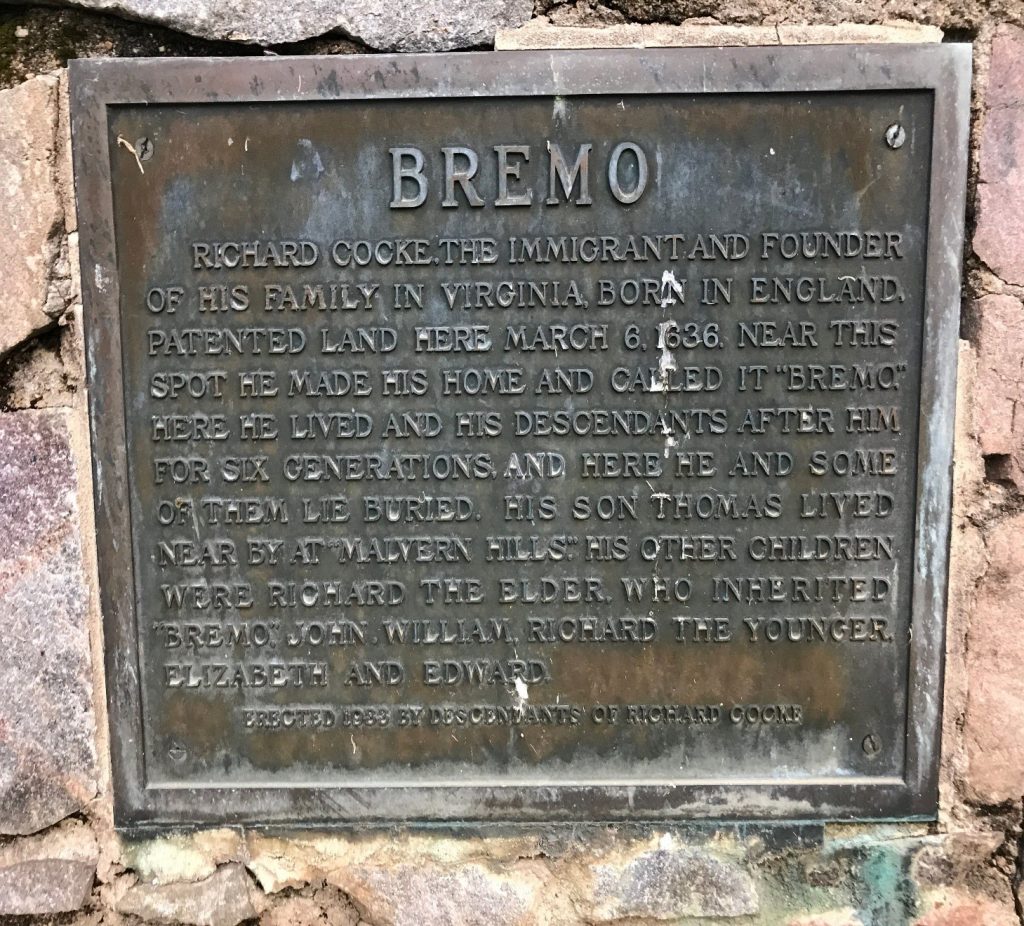
Richard died 4 Oct 1665 and, as he requested, was buried in his orchard near Temperance in the Malvern Hills Cemetery.
Richard’s children with Temperance were Thomas (ancestor) and Richard (the elder). He and his second wife Mary had five children: William, John, Richard (the younger), Elizabeth, and Edward who was born shortly after his father’s death.
You can still step on the land settled by Richard Cocke but, according to an old article in the Oct 1933 issue of William and Mary Quarterly, the house is no longer standing. “There is not a vestige of the old house at “Bremo” not nor anything except the old graveyard and the name by which the place is known to indicate the locality in which the house stood. A frame house was built there a few years ago by Mr. W. H. Ferguson, superintendent of the present “Curles Neck Farm” who says that this house is on the site of an old house that was burned by Federal gunboats during the War between the States. This is probably the location of the old house of Richard Cocke for it is near the graveyard and close to the riverbank…”
This is a link to the find a grave web page if you want to visit this very old family cemetery.
The next stores are about two of our Fike ancestors:
Joseph Bridger 1627-1686

From a History of the Isle of Wight County Virginia:
“Joseph Bridger, the most prominent man of his time in the Isle of Wight County, was the third son of Samuel Bridger, auditor of the College of Gloucester, who died in Gloucester in 1650. He was a member of the House of Burgesses from the Isle of Wight, in the session of 1657-8, which appears to be the first mention of his name in Virginia records, so he probably came over shortly before this time (Journals p. XXIII). He was also a member of the House in 1663. On the 7th of June 1666, He together with William Burgh patented 7,800 acres “beginning by a white march, a meadow about a half a mile from the main run of the Blackwater ” (De. p.559). This was for the transportation of 156 persons and among those named were Thomas Pitt, James Bridger, probably a brother, and himself, Joseph Bridger. His residence “Whitemarsh” may have been named from the marsh mentioned herein.
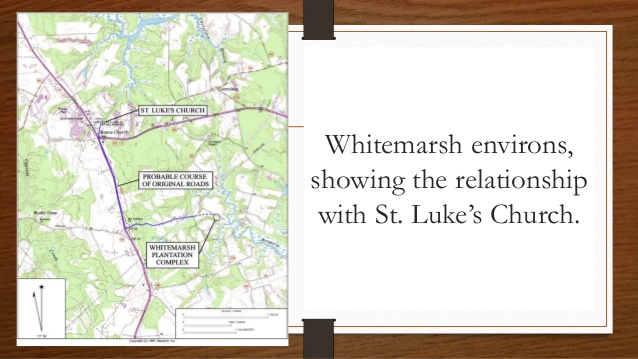
Colonel Bridger was an adherent of Governor Berkeley during Bacon’s Rebellion in 1676 and was denounced along with the other prominent Virginians in Bacon’s Proclamation of 1676 as “wicked and pernitious Councillors ,aiders and asstors against the Commonalty in these our cruel commotions” (Va. Mag. I p.60). Sir John Berry, one of the commissioners sent over by Charles II to report on Governor Berkeley’s rule says that Colonel Bridger was a “a very resolute gentleman, who though forced to fly in the heat of war from his own Countrie, yet on his return was very active and instrumental in reducing to their obedience the South parte of the James River”. The Colonel fled to the Eastern Shore with the Governor during the Rebellion.”……..
From the Encyclopedia of Virginia Biography:
“Bridger, Joseph, the subject of this sketch, was born in 1628, and in March, 1657-58, he represented Isle of Wight in the house of burgesses, as also in 1663. The following year, he was one of the commissioners to decide upon the boundary line between Virginia and Maryland, and on July 12, 1666, he was one of the commissioners to treat with Maryland upon the subject of tobacco culture, and in the same year he is mentioned as a member of the general assembly with the title of adjutant general Bridger. In 1670, he was sworn a member of the council and was present at meetings in 1674. There seems to have been some question of his eligibility for membership, however, for in a list of the councillors made for the lord of trades and plantations, the name of Joseph Bridger is marked “query,” and their lordships stated that they would inquire further into the ability and deserts of Col. Joseph Bridger to be of the council. The King, however, on March 14, 1678-79, directed that Joseph Bridger be continued in the council, and he is mentioned as a counselor as late as 1683.
In 1675, Col. Bridger took part in the Indian wars, and in the year following, was described by Nat. Bacon, as one of Berkeley’s “wicked and pernicious councilors.” During Bacon’s rebellion, Gov. Berkeley gave to Col Bridger the command of “all the country south of James River.” In 1680, he was commander-in-chief of the militia forces raised “so as to be ready for the Indians” in Isle of Wight, Surry, Nansemond and Lower Norfolk. In 1683, Lord Culpeper appointed him his deputy in the office of vice-admiral. Gen.
Joseph Bridger died on April 15, 1686. He had acquired a very large landed estate in Isle of Wight county besides grants in Surry and James City counties and Maryland. He has numerous descendants.”
Joseph Bridger’s Will:
The William and Mary Quarterly, Vol. 7, No. 4 (Apr., 1899), pp. 243
Will of ColI. Joseph Bridger : Personal estate to be equally divided between his wife and sons : Joseph, Samuel and William, and daus. Martha (Godwin), Mary and Elizabeth, share and share alike; except Martha Godwin is to have one hundred pds. less than the rest in respect of what I have already given her husband; and alsoe there mother and my dear wife shall have in the first place and before it be delivered, over and above her proportion at her choice, one Bed covering and furniture to it, halfe dozen chaires, a chest of drawers, table and carpet and looking glasses and Andirons to furnish the chamber and one horse as she shall choose, and one man, and one woman servant white or black to waite upon her, besides all her apparell, Rings, jewels, and appurtenances for life, and at her decease to go to his heirs; to Samuel Bridger the plantation bought by me of John Gatlin and William Gatlin wherein John Cooke now lives, also one half of my plantation of Curawaock 7800 acres, &c.; to Son William 850 acres granted to me by an escheat formerly belonging to Nathaniel Floyd, &c., and another tract part of which is leased to Christopher Wade; his wife to have the tract of land on which he lives, 850 acres formerly belonging to Capt. Upton, and 300 acres formerly belonging to Mr. Seward, and she keeping the Brick housing and orchard in repaire; after her death they are to go to his son Joseph, as well as half the land at Curawaock for his natural life, and remainder to the heirs male of his body; also tract at Manokin: to my mother Mrs. Mary Bridger 5 pounds yearly during her life. Lt. ColI. Jno. Pitt, Mr. Tho. Pitt and ColI. Arthur Smith to assist my wife, to whom I give 20 shillings apiece to buy Rings.
Dated 18 Oct., 1683. Proved May 8, 1686.
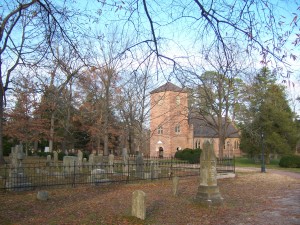
“Colonel Bridger died the 15th of April, 1686.”…… “Many years ago Colonel Bridger’s tombstone was found on his farm “Whitemarsh” and it was removed to the Old Brick Church where it lies at the foot of the chancel.” …..” Colonel Bridger made his will October 18, 1683 and same was probated May 8, 1686.”
Joseph was buried in the Chancel of St. Luke’s Church. Old St. Luke’s, originally known as the “Old Brick Church” of Newport Parish, is the oldest existing Church of English foundation in this country and the nation’s only surviving original Gothic building. The Church is dated as having been begun in 1632. It is located on route 10, about 4 miles south of Smithfield, Virginia. Colonel Joseph Bridger, who was long associated with St. Luke’s brought over from England members of the Driver family to do the “finishing” work inside the Church. He was given much acknowledgement for the important contribution he made in completing the Church. Joseph Bridger was first buried on his farm “Whitemarsh”, and later his remains were moved into the Church and marked by a marble tombstone located in the chancel.
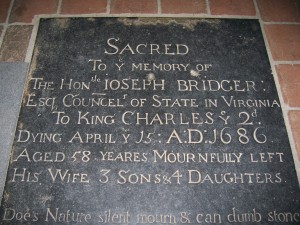
“Sacred to ye memory of the Honble Joseph Bridger Esq. Councelr of State of Virginia to King Charles ye 2nd. Dying April 15, A.D. 1686. Aged 58 years; Mournfully left His wife, 3 sons & 4 daughters.” Also buried in the chancel, and beside the remains of Joseph Bridger is: Anne Randall who departed this life the 23 day Anno. Dom. 1696.
The following story is copied from a Bridger family historian’s website:
“The Bridger family and members of the Bridger Family Association gathered at the Smithsonian National Museum of Natural History in Washington D.C. the next April. We were all allowed to enter the museum one hour before it was opened to the public. We had a personal tour by Dr. Owsley, who exhumed my 12th great grandfather Joseph Bridger’s bones and who helped create the Written in Bone exhibit at the Smithsonian. There was a plaque and displays illustrating that our “Grandpa Joseph” died from lead poisoning and that he was a victim of his wealth.
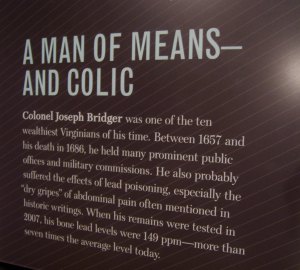
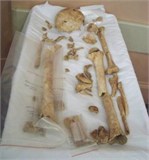
She told us that Colonel Joseph Bridger, a Royalist and a member of the Virginia House of Burgesses, served the King of England until his death in 1686 at age 58. Joseph Bridger gave the money to help finish the church and brought men from England to help build the church tower. To honor him, church members chose to have his bones removed from his gravesite at his home, Whitemarsh, and rebury them in the church. Joseph Bridger’s wife was Hester Pitt, daughter of Robert Pitt, who was also a Burgess. The docent at the church then told me that there was a Bridger Family Association that I might want to join. From their website, I learned that the bones of Col. Joseph Bridger, determined to be one of the wealthiest men in Colonial Virginia at the time, were exhumed in April of 2007 and taken to the Smithsonian Institution for study. Smithsonian anthropologist Dr. Douglas Owsley and his team have studied the bones for information on Bridger such as his health, diet and build. The information gleaned from the study of Bridger’s bones is part of an exhibit which opened in February 2009 at the Smithsonian National Museum of Natural History entitled “Written in Bones: Life and Death in the Colonial Chesapeake.” See http://anthropology.si.edu/writteninbone/ for a video of the exhibit and an explanation by Dr. Owsley. The History Channel filmed the exhumation of Joseph Bridger’s bones and published the film on their website.
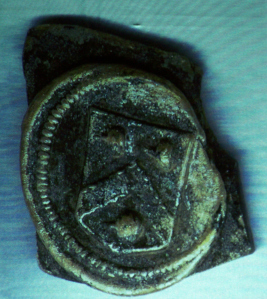
This is a presentation about recent archaeology of Whitemarsh Plantation.
Robert Braswell 1611-1668
Robert Bracewell is one immigrant whose migration to America can be attributed to a purpose higher than economics or necessity as he was a Priest of the Church of England. Robert was born 1612 in England. He graduated from Oxford University with a BA in Divinity on 11/3/1631.
Robert immigrated to Isle of Wight Co VA in about 1645. He married Rebecca Izard in 1649 in Virginia and in about 1650, he assumed the Parish of Lawne’s Creek, Isle of Wight Co VA.
In 1651, he purchased 300 acres of land in Isle of Wight County from Capt. John Upton, who mentioned this land in his will of January 16, 1652.
In 1652 Robert served as Pastor of St. Luke’s Church, Smithfield VA. Constructed in 1634, St. Luke’s (known affectionately as Old Brick) is the oldest original Protestant church in America. It is the church where our ancestor Joseph Bridger was buried. In 1653, Robert was elected to the House of Burgesses; however, his status as clergy was deemed to set an undesirable precedence (conflict between church and state). And, he was dismissed.
Robert wrote his will on 2/15/1667, naming Richard Izard as an executor. And, Robert died shortly thereafter.